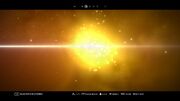Thamalandis (talk | contribs) m (Since AR Black Holes etc. are not shown on the map and it was never restored. Damn that false info is antique.) |
No edit summary Tags: Mobile edit Mobile web edit |
||
| Line 1: | Line 1: | ||
{{Version|Abyss}} |
{{Version|Abyss}} |
||
[[File:NMS1dot3starsystemview.jpg|right|480x480px]] |
[[File:NMS1dot3starsystemview.jpg|right|480x480px]] |
||
| − | A '''star system''' is a system of [[planet]]s and other objects that orbit a [[star]]. |
+ | A '''star system''' is a system of [[planet]]s and other objects that orbit a [[star]]. |
| + | AHHHHHHHH FUCK ME DADDY FUCK ME HARD AHHHH MY PUSSY IS DRIPPING |
||
==Summary== |
==Summary== |
||
Revision as of 23:07, 14 January 2019
| The subject of this article is from the Abyss update.
The information from this article is up-to-date as of 21 November, 2018. |
The information from this article is up-to-date as of 21 November, 2018.
A star system is a system of planets and other objects that orbit a star. AHHHHHHHH FUCK ME DADDY FUCK ME HARD AHHHH MY PUSSY IS DRIPPING
Summary
These procedurally generated systems are the seat of all planets and worlds in the game. Most of the planetary systems in No Man's Sky will most likely never be visited.
They are also known as solar systems or planetary systems.
Information on Galaxy Map
The UI for the Galactic Map shows key information regarding the system selected. The Information that is displayed is:
- Star system name
- Spectral class
- Presence of planets with seas or oceans (WATER)
- The region the system ID is part of
- Distance
- Dominant Lifeform
- Economy (Requires Economy Scanner )
- Conflict Level (Requires Conflict Scanner )
Classification
There are four colors of star systems.
- Yellow star systems (Class F & G) are the most common.
- Red and orange star systems (Class M & K), uncommon, can only be accessed with Cadmium Drive, only Red/Orange star systems will have planets with Cadmium.
- Green star systems (Class E), rare, can only be accessed with Emeril Drive, only Green star systems will have planets with Emeril.
- Blue and purple star systems (Class B & O), rare, can only be accessed with Indium Drive, only Blue/Purple star systems will have planets with Indium.
Influence on Planet Generation
Planet Generation parameters are influenced by star system types, as well as galaxy types. However, galaxy types only alter yellow star systems, therefore red, green and blue stars have similar parameters across all galaxies.
- The odds for exotic biomes, in any galaxy, are: Green (x1) < Blue (x2) < Red (x3). In Imperfect and Raging galaxies, yellow stars will never have exotic planets. In Tranquil and Ancestral galaxies, yellow stars have the same chance for exotic planets as green stars.
- In Imperfect and Raging galaxies, yellow stars have 2x more chance to have lush planets.
- In Tranquil galaxies, yellow stars have 4x more chance to have lush planets, and 4x lower chance to have dead planets, compared to other stars in that galaxy.
- In Ancestral galaxies, yellow stars have 2x more chance to have dead planets, and lush planets have the same chance as other stars in that galaxy.
Other classifications
Uncharted star systems and Abandoned star systems are systems devoid of sentient life. Uncharted systems are empty of any structures, including space stations, and abandoned systems only have ruins and abandoned structures.
Any non-yellow star system can be uncharted or abandoned.
Classification Exceptions
Not all star systems are distinguishable according to spectral class, including star systems containing:
- Atlas Interfaces
- Black Holes
- The center of a galaxy
Without a quest or ability to guide the player, both the Atlas Station and the Black Hole can be found by help of a portal. Once visited it can be tracked down by selecting the system from the discovery menue as waypoint after returning home.
Black Hole System: 079079
Atlas Station: 07A07A
Concentration of star systems

A concentration of star systems.
It is possible to find a concentration of star systems in the galaxy. Those concentration are extremely rare and have a colorful blur. It is unknown if those stars are any different from the standard. Multiple blue, red and green stars can be found in these.
Naming conventions
All star systems receive a random name from the initial seed. When discovered, they may be renamed by the discoverer. There are a variety of Star System Nomenclature options for choosing a star name, or random names may be chosen at will.
As with planetary discoveries, players are limited to 42 characters when renaming a star system.
Release history
- Atlas Rises - the letter and number part of a star's classification were temporarily removed. It was restored as part of Update 1.38, but without Black Holes. Atlas Stations and Black Holes now show the spectral class of their actual star.
- NEXT - the warp drive classifications changed, replacing Sigma/Red, Tau/Green, and Theta/Blue
- Abyss - Systems with ocean worlds are now indicated with "Water" after the star classification.
Known star systems
For a list of known star systems, see the star system category.
Known star systems (pre-release)
For a list of known pre-release star systems, see the Pre-release star system category.

